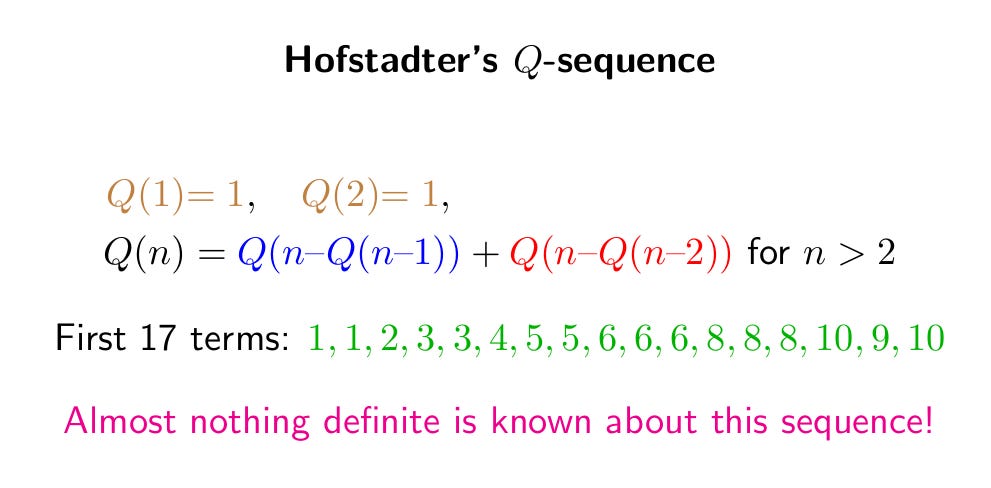Generalizations of Hofstadter’s Q-sequence
The Fibonacci numbers are the famous sequence that begins 1, 1, 2, 3, 5, 8, 13, 21, 34, 55. Each term, other than the first two, is obtained by looking at the previous two terms and adding them together; for example, 34=21+13 and 55=34+21. Algebraically, this can be expressed by the relation F(n) = F(n–1) + F(n–2).
Keep reading with a 7-day free trial
Subscribe to A Piece of the Pi: mathematics explained to keep reading this post and get 7 days of free access to the full post archives.


